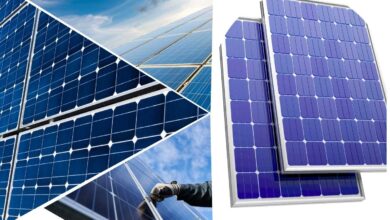Maximize Your Savings: The Ideal Time to Install Solar Panels in Australia

Australia, with its abundant sunshine and favorable climate, is an ideal location for harnessing solar energy. If you’re considering investing in solar panels and installation, timing your purchase and installation can significantly impact your overall savings. Here’s a comprehensive guide to help you maximize your savings by choosing the best time to install solar panels in Australia.
Understanding the Benefits of Solar Panels
Before diving into the ideal timing, it’s important to understand why solar panels are a smart investment:
- Energy Savings: Solar panels convert sunlight into electricity, reducing your reliance on the grid and lowering your energy bills.
- Environmental Impact: Solar energy is clean and renewable, reducing your carbon footprint.
- Increased Property Value: Homes with solar installations often see an increase in property value.
- Government Incentives: Various incentives and rebates make the initial investment more affordable.
Seasonal Considerations for Solar Panel Installation
Summer
- Pros:
- Maximum sunlight hours, leading to higher energy production.
- Longer days can shorten installation time.
- Cons:
- Higher demand for solar installations can increase prices.
- Extreme heat can affect the efficiency of solar panels.
Winter
- Pros:
- Lower demand for installations often results in better deals and discounts.
- Cooler temperatures can improve the efficiency of solar panel installations.
- Cons:
- Shorter daylight hours mean less energy production during installation.
- Weather conditions might delay the installation process.
Spring and Autumn
- Pros:
- Mild weather conditions are ideal for installation.
- Balanced sunlight hours provide a good mix of production and efficiency.
- Lower demand compared to summer can mean competitive pricing.
- Cons:
- Unpredictable weather patterns might cause minor delays.
Financial Incentives and Rebates
Timing your solar panel installation can also be influenced by government incentives and rebates. These can vary by state and are often subject to change, so staying updated on current programs is crucial.
Federal Government Incentives
The Australian Federal Government offers the Small-scale Renewable Energy Scheme (SRES), which provides Small-scale Technology Certificates (STCs) based on the amount of electricity the system generates. The value of these certificates fluctuates, so installing your system when STC prices are high can maximize your savings.
State Government Incentives
Many states offer additional rebates and incentives. For example, Victoria’s Solar Homes Program offers substantial rebates for solar panel installations. Timing your installation to coincide with these programs can provide significant financial benefits.
Monitoring Solar Panel Prices
Solar panel prices have been decreasing over the years due to advancements in technology and increased competition. However, prices can still fluctuate based on demand, supply chain issues, and market trends. Monitoring these trends can help you identify the best time to purchase and install your system.
Optimal Timing Based on Usage Patterns
Consider your household’s energy usage patterns when deciding on the installation time. Installing solar panels just before the peak usage months can maximize your immediate savings. For instance, if you use more energy during the summer for air conditioning, installing your system in late spring or early summer can help you offset those costs right away.
Planning and Permits
The installation process involves several steps, including planning, obtaining permits, and the actual installation. Starting the process early can ensure you’re ready to go when your ideal installation window arrives. Here’s a brief overview of the steps involved:
- Site Assessment: A professional will evaluate your property to determine the best placement for your solar panels.
- System Design: Based on the assessment, a customized system design will be created.
- Permits and Approvals: Necessary permits and approvals from local authorities will be obtained.
- Installation: The solar panels and associated equipment will be installed.
- Inspection and Connection: A final inspection will ensure everything is up to code before connecting your system to the grid.
Conclusion
Maximizing your savings when installing solar panels in Australia involves careful consideration of various factors, including seasonal conditions, financial incentives, market trends, and your energy usage patterns. By understanding these factors and planning accordingly, you can ensure that your investment in solar energy provides the greatest possible return.
Whether you decide to install solar panels in the height of summer or the cool of winter, the key is to stay informed and make strategic decisions based on your unique circumstances. By doing so, you’ll not only save money but also contribute to a more sustainable future.





